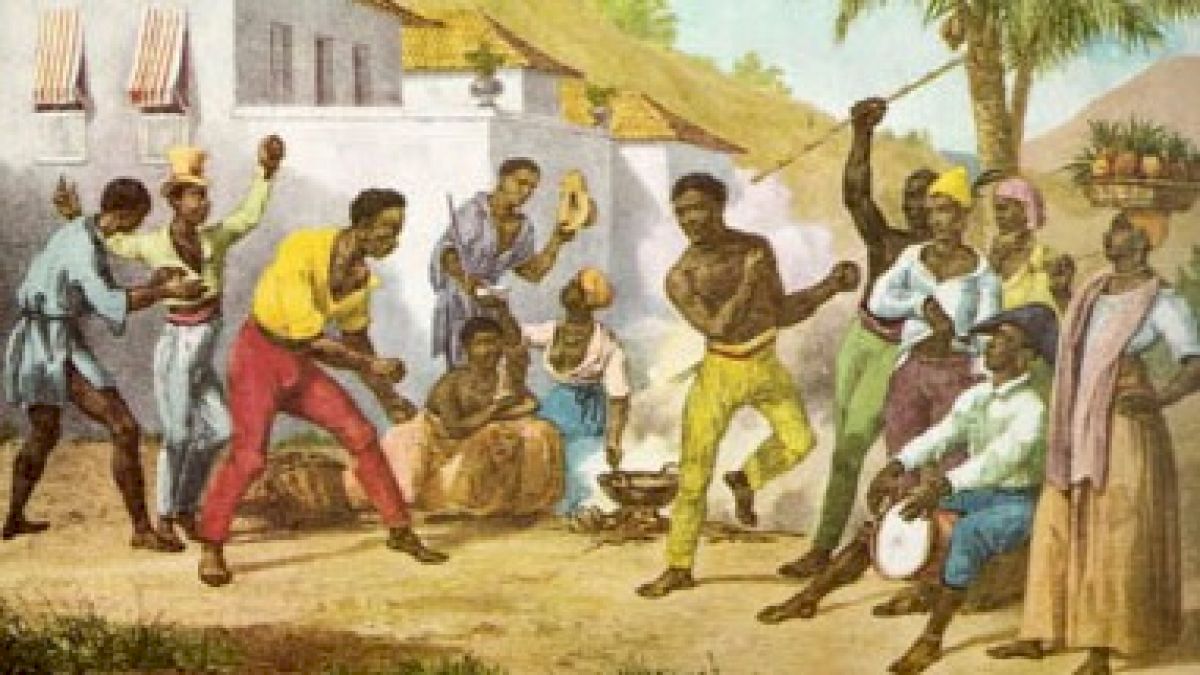The Origins Of Merengue Dance
The Origins Of Merengue Dance
The history and origins of Merengue dance.

The origins of Merengue dance are unclear to say the least. There are many myths and contradictions that surround the birth story of this fun, feel-good dance. One thing, however, is certain: Merengue is the national dance of the Dominican Republic -- and Haiti as well, to some extent.
The Dominican Republic is the birth place of several dances popular throughout the Caribbean and Latin American, so it's no surprise that the Merengue finds its origins in the area, too.
There are several convincing origin stories behind the history of Merengue, and perhaps all have some fragment of truth, but the most likely story is that Merengue was invented by slaves in the 1700s. The belief is that the Merengue is a the result of a combination between two different dances: the African and the French Minuet. The story goes like this: slaves in the Dominican Republic would watch their masters dance these stoic ballroom dances during various events and then they would get together and mimic the dances of the "masters." Being as these dances were stiff and arguably boring, slaves made the dance their own by quickening the tempo of the music and adjusting their dancing to the newly created rhythm.
Originally Merengue was danced as a group dance rather than with individual couples. Dancers would form a circle and men and women would dance arms length a part while facing each other. The dance was originally accented by quick feet and rapid movement of the shoulders as opposed to focusing on the hips.
There are some other interesting theories in regards to the origins of Merengue. One is that the belief that the dance was created after a great warrior was wounded in the leg during battle. Upon his return, the townspeople threw him a welcome party, and in solidarity with his plight the villagers danced with only one foot while dragging or limping on the other.
Another myth is that the dance was created by slaves that were chained together in the sugar cane fields. The theory is that they would cut the cane to the beat of the drum and as they cut they were forced to drag their chained leg behind them and that this movement evolved into the Merengue that we know today.
Regardless of the true origins of this national dance, the Merengue is one of the foundational dances of Latin America. It's easy to learn the movements and the upbeat music makes it popular among novice and expert dancers alike.
The Dominican Republic is the birth place of several dances popular throughout the Caribbean and Latin American, so it's no surprise that the Merengue finds its origins in the area, too.
The Most Likely Story
There are several convincing origin stories behind the history of Merengue, and perhaps all have some fragment of truth, but the most likely story is that Merengue was invented by slaves in the 1700s. The belief is that the Merengue is a the result of a combination between two different dances: the African and the French Minuet. The story goes like this: slaves in the Dominican Republic would watch their masters dance these stoic ballroom dances during various events and then they would get together and mimic the dances of the "masters." Being as these dances were stiff and arguably boring, slaves made the dance their own by quickening the tempo of the music and adjusting their dancing to the newly created rhythm.
Originally Merengue was danced as a group dance rather than with individual couples. Dancers would form a circle and men and women would dance arms length a part while facing each other. The dance was originally accented by quick feet and rapid movement of the shoulders as opposed to focusing on the hips.
Alternative Origins Stories
There are some other interesting theories in regards to the origins of Merengue. One is that the belief that the dance was created after a great warrior was wounded in the leg during battle. Upon his return, the townspeople threw him a welcome party, and in solidarity with his plight the villagers danced with only one foot while dragging or limping on the other.
Another myth is that the dance was created by slaves that were chained together in the sugar cane fields. The theory is that they would cut the cane to the beat of the drum and as they cut they were forced to drag their chained leg behind them and that this movement evolved into the Merengue that we know today.
Regardless of the true origins of this national dance, the Merengue is one of the foundational dances of Latin America. It's easy to learn the movements and the upbeat music makes it popular among novice and expert dancers alike.